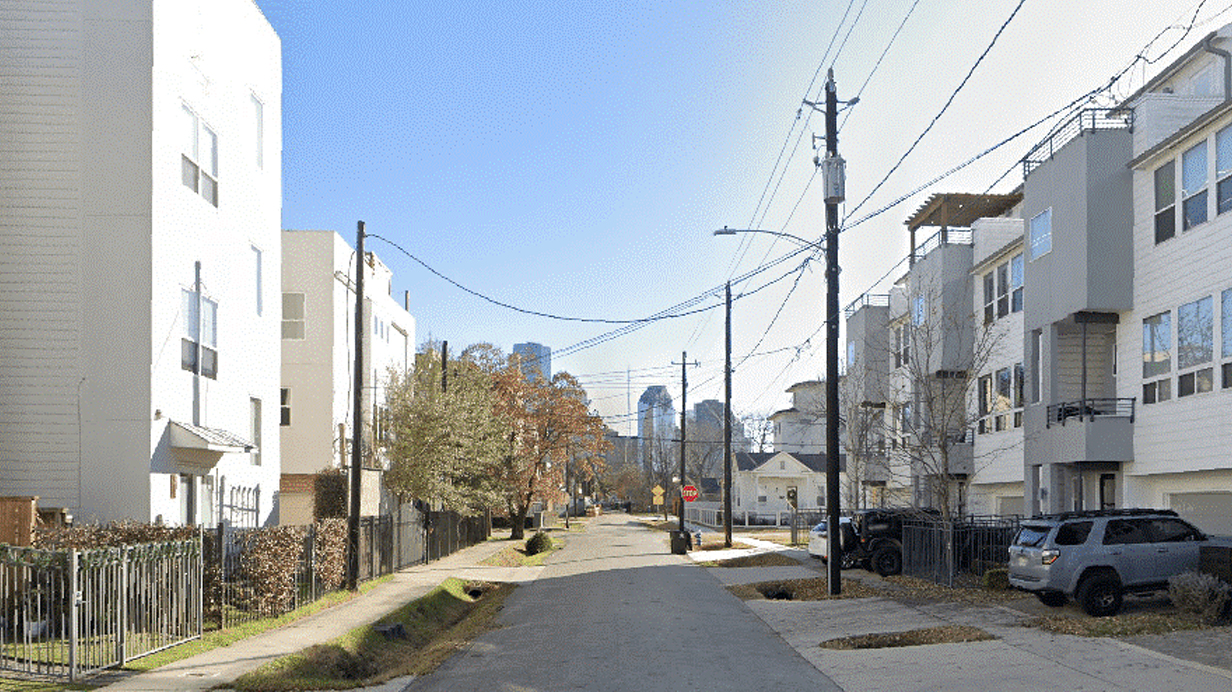
Jan. 30, 2024
Perspective by Michael Lucas
There is no logic that can be superimposed on the city; people make it, and it is to them, not buildings, that we must fit our plans. –Jane Jacobs
Americans who have traveled abroad often report a common experience upon returning home to the States. People report the lack of air conditioning, of course, but they also share with us the beauty of the tiny village in the Italian countryside. They speak of culture shock, great food, interesting people, wonderful art, street performances and so on—but most importantly, they talk about where they’re going to visit next. Out of curiosity, have you ever met a European who visited San Francisco or New York, and who then wanted to check out Gary, Indiana? I doubt it. Do tourists come to Lake Geneva and say, “Oh, downtown was great! I just wish we had more time to check out the suburbs!” The answer, yet again, is a resounding “no.” American cities are not worth seeing—much less living in.
When walking the streets of Frankfurt, Venice and Edinburgh, there’s a charm and liveliness to European life that is entirely absent from any American city or town. The most obvious reason for this is the architecture. A glimpse of the Gothic cathedrals of France is bound to inspire awe; the Renaissance architecture of Florence makes us yearn for a coffee while looking out over the Arno River. All of this is commonplace in great European cities, which is why we would all love to live here…

But instead are forced to live in cities like this…
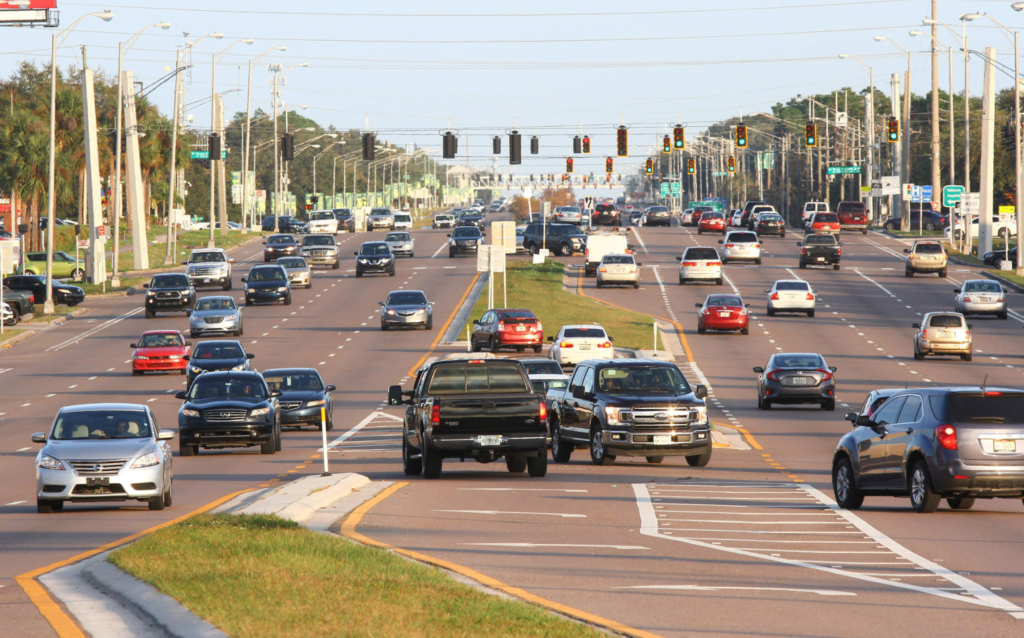
Apparently, the Soviets had much more effect on the American way of life than we give them credit for. Despite “winning” the Cold War, we have substituted cold, utilitarian Modernism for the Colonial and Greek Revivalist architecture that was once quite common in the United States. Even in the Southern states where much of this architecture thrives, it is slowly being usurped by the modernist technocrats who place function above form.
Personally, I’m tired of the unoriginal granite countertops, black and white backsplashes, and gray exteriors. If the interiors of our homes are this dead and bland then you can’t blame me for thinking the same is true of our cities… and maybe even our souls.
American Planning
The American way of city planning is based on what is called Euclidean zoning. The idea is that the use of land should be separated by type. In other words, this land is for residences, that land is for commerce, and that land way over there is for industry. Interestingly, American planners didn’t always used to plan their cities this way. Before the development of Euclidean Zoning, Americans practiced something called hierarchical zoning.
Hierarchical zoning works in the following way: imagine a pyramid with three levels. The base of the pyramid is for “industrial” use. If an area is zoned as “industrial” then industrial buildings can be built in that zone—but so can residential and commercial buildings. The next level of the pyramid is for “commercial” use. Commercial buildings can be built in these zones as well as residential buildings. The last, and highest level of the pyramid is for “residential” use. Only residential buildings can be built in this zone.
If you ever wondered why downtown looks so different from the rest of a city, it is likely because the downtown area is a remnant of this older way of planning. Look at the city below.
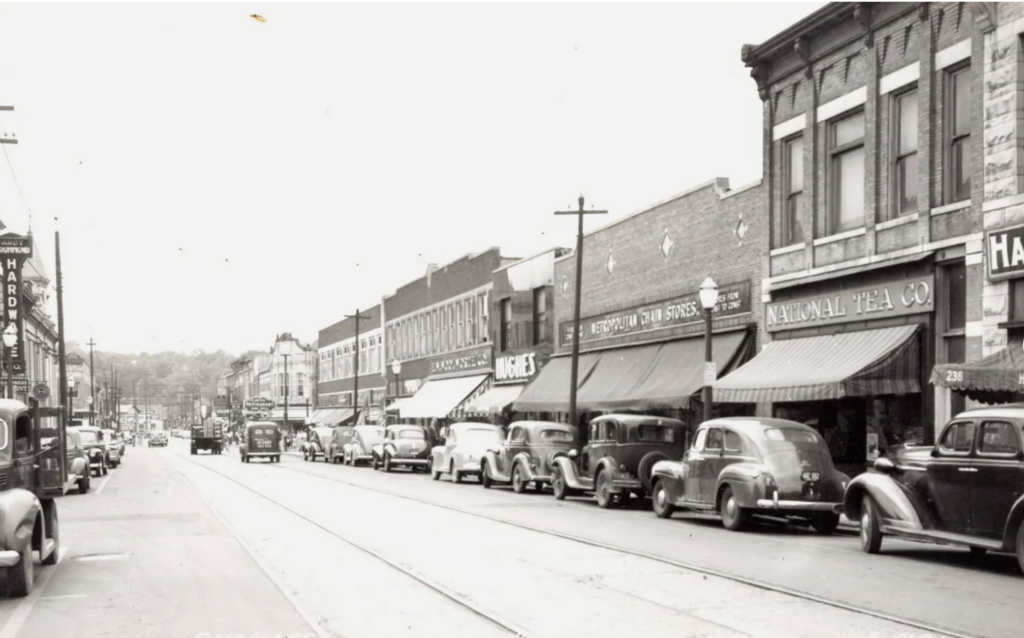
I imagine you won’t be surprised to learn that this downtown area is still standing despite many of the original buildings being constructed in the 1840s. I am willing to bet, however, that you did not know this downtown (and virtually every other like it) is the best and most reliable source of revenue for the city. But why is that?
The answer is in the picture above. Look, and look carefully. Answer: above virtually every store on this street are residences. This street is an example of mixed-use zoning—the very thing responsible for the awe and wonder of European cities. Look back at the picture of Geneva, Switzerland. Virtually every building is a mid-rise building, 2-5 stories tall. There are no skyscrapers, no big box stores, no avenues, no traffic lights, no billboards, no massive parking lots, and certainly no single-family dwellings. People who live in Geneva have virtually everything they need within walking distance of their home—no car necessary. The effect of this is that cities can take advantage of economies of scale. Rather than having to lay miles and miles of sewage and electrical lines, having residences and commercial buildings densely packed together means that more buildings can be serviced by these utilities without needing to build nearly as much infrastructure. It also means that public services such as police, paramedics and fire can respond quickly to emergencies while covering huge swathes of the population.
This is what is missing from American cities. Our cities desperately lack mixed-used buildings, and as a result, our cities lack life. In downtown Waukesha today you can live in one of the apartments on this street, walk downstairs and get a cup of coffee from The Steaming Cup, read a book at Martha Merrell’s, stop by Sakura’s Sushi bar for lunch and catch a play at the Civic Theatre—all within five minutes of your apartment. But that’s only the half of it. There’s no telling what people you might meet while waiting in line for your coffee, or who might take interest in the book you’re reading. Interactions of this sort are mostly alien to Americans, but they don’t have to be. The fact that they are is a recipe for estrangement; a recipe for isolation and lack of love for one’s community. In the current environment, most people can’t be bothered to go out of their way to spend time in their communities. Either the commute, the heavy traffic or the nightmarish parking situation gets in the way. Why must it be this way?
Single-Family Zoning is in the Way
The single-family home is the quintessential “American Dream.” The picture of a white picket fence, charcoal grill and dog chasing the kids through the sprinklers is an image that flourished in the early to mid- 20th century. Unfortunately, this dream often gets in the way of reality. In the early 20th century when land surrounding major economic centers was abundant, there was virtually no issue with single-family housing. Many, if not most, people were perfectly capable of purchasing and affording a single-family home in the suburbs. But today, the facts are very different from what they were in 1950.
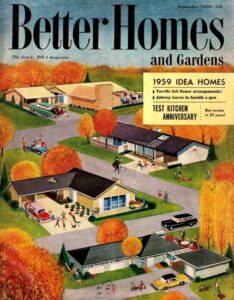
Single-family zoning forces all people into a one-size-fits-all living situation and artificially drives up the cost of housing. If land can only be used to construct dwellings for single families, then low- and middle-income families and individuals are put in a financial bind—limiting their ability to invest in the human capital of their children and of themselves. What I’m advocating is choice. In American cities you have two options: rent or own. If you rent, you live in an apartment. If you own, you live in a single-family home. There is rarely an in-between.
If you look at a city or town’s zoning map you will frequently see single-family zoning (R-1) taking up most of the “residential” area. What this means is that municipalities build “out” rather than “up,” and greatly increase their impact on the environment by consuming more land than may be necessary. In addition to the widespread use of R-1 zoning to encourage single-family dwellings, other land use regulations are introduced that constrict the supply of housing and increase the price of single-family homes more than would otherwise be the case.
Lot Requirements
If you live on a parcel designated as R-1 there is much more regulating that land than the rule that there may only be one dwelling. For example, the picture below is an example of the City of Burlington’s lot requirements for a dwelling built in the Rs-1 zone. In this zone, there are three minimum setbacks: a 25-foot “front setback”, a 20-foot total “side setback” and a 25-foot “rear setback.” The lot must also be at least 14,000 sq/ft with a minimum width of 80 feet, and the building cannot exceed a height of 35 feet. Adhering to all these requirements means that only 53% of the parcel can be developed. That leaves at least 6,500 sq/ft of land undeveloped on a 14,000 sq/ft lot. As a point of comparison, assume a 3-bedroom, 2-bath apartment is 1,300 sq/ft (I lived in a 3/2 apartment in Miami, Florida that was 1,295 sq/ft). That means that a single-story 7,500 sq/ft house is equivalent to 5.76 of these apartments, capable of housing at least 17 people. If we apply this to the entire 14,000 sq/ft lot, that would be 10.76 apartments and 32 people.
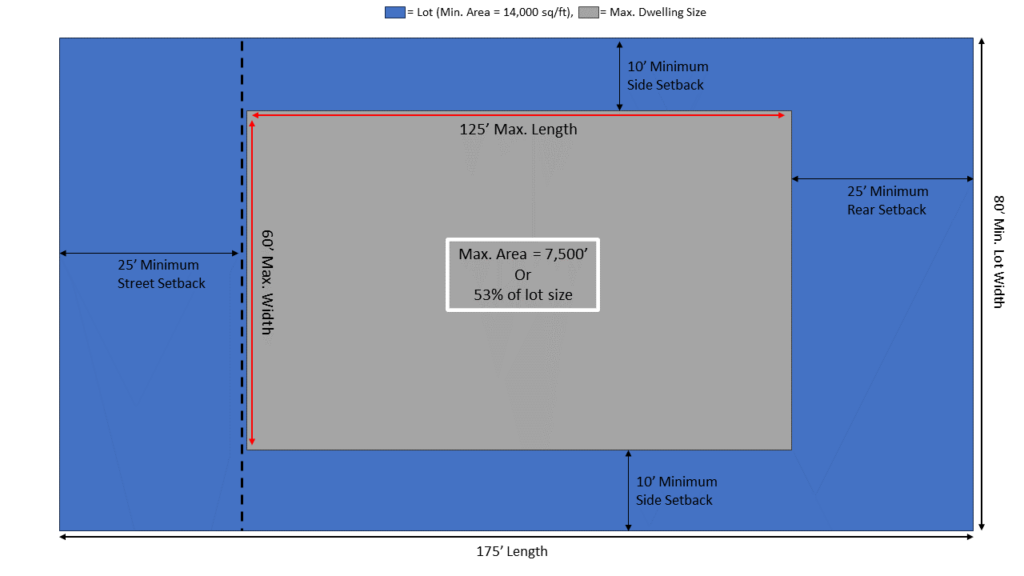
Just from this simple calculation it becomes obvious that there is huge potential for increasing the number of dwellings on a given lot. Simply by reducing the front and rear setbacks to 15 feet yields an additional 1,200 sq/ft of livable space—a rather reasonable addendum to the zoning code if one is concerned about street visibility.
Even very moderate upzoning would do wonders for increasing housing availability. Salim Furth writes: “If a block of 20 single-family homes becomes a block of 17 single-family homes, two fourplexes, one duplex, and one accessory dwelling unit,” you increase the housing supply by 37.5%.[1]
Furthermore, if one increases the maximum building height to 60 feet and allows commercial uses on the ground floor, the 7,500 sq/ft that could be used to accommodate just one family could instead accommodate three 2,500 sq/ft businesses on the ground floor and nine 2,500 sq/ft dwellings on the 2nd, 3rd and 4th floors (assuming that the height of a story is 14 feet). Given that the median home size in Wisconsin is under 2,000 sq/ft, these are extremely conservative estimates. If we account for the median home size in Wisconsin, a 14,000 sq/ft lot in Burlington utilizes only 14.2% of an Rs-1 parcel.
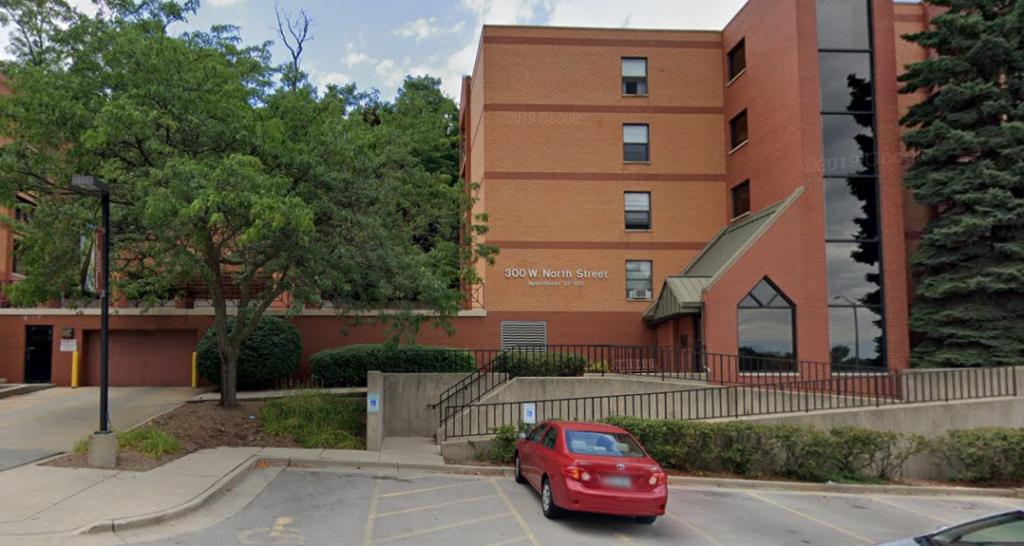
People commonly object that medium- and high-density configurations like those above would make parking a nightmare. But even if we assume that this parcel is replaced by the 4-story mixed-use building, there is still plenty of space available to accommodate vehicles. In the U.S. a standard parking space is 9×18’ or 162 sq/ft. If the 7,500 sq/ft building is accommodating nine residences with two cars each, and each of the three businesses have five employees, the minimum number of parking spaces required would be 33 at 5,346 sq/ft. That leaves 1,154 sq/ft for navigating the parking lot—a tight squeeze to say the least. However, this does not take into account the possibility of sub-level parking and tuck-under garages. These kinds of parking arrangements are already incredibly common in single-family developments and mountainous areas such as this hillside apartment complex in Waukesha. If sub-level parking is used to its full advantage, there would be absolutely no cause for concern. But even assuming that there is only one level of sub-level parking beneath only the footprint of the building, a total of 25 parking spaces can be fully accommodated (It is standard to use 300 sq/ft as the size of a parking space to account for traffic isles, end caps, space between cars and entrance and exit lanes). This still leaves 47% of the ground-level lot available for temporary customer parking. Meanwhile, these sorts of arrangements are already common in Europe and many American cities are following suit.
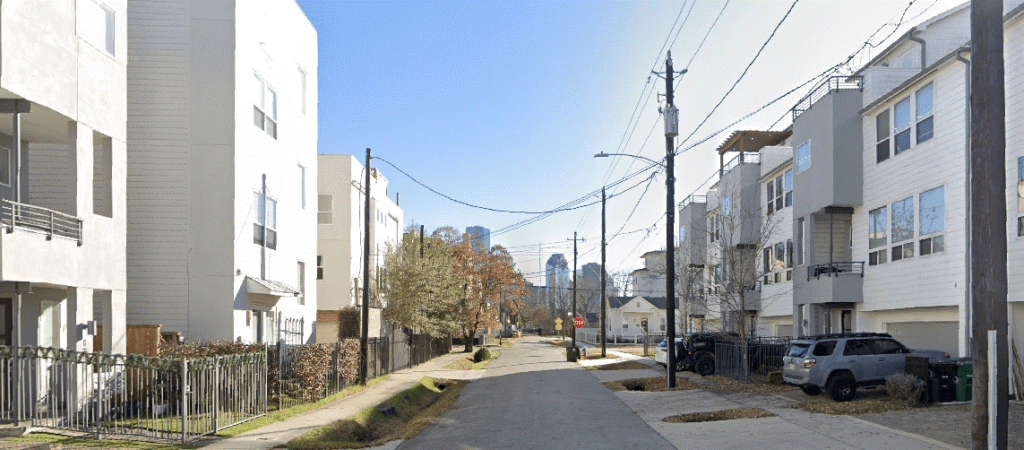
Let’s consider Houston, Texas for a moment. In 1998 and 2013 the city of Houston reduced its minimum lot size requirements from 5,000 sq/ft to 1,400 sq/ft. The picture below is of the exact same street as the one above before the lot size requirement was reduced. I think most readers will agree with me that the first picture is preferable to the second. And not just for aesthetic reasons, either. When we talk about buildings, houses, mobile homes, trailer parks or whatever, we are talking about people. These buildings are places of business and residence; but they are also places of opportunity, dinnertime conversations, neighborhood block parties and much, much more.
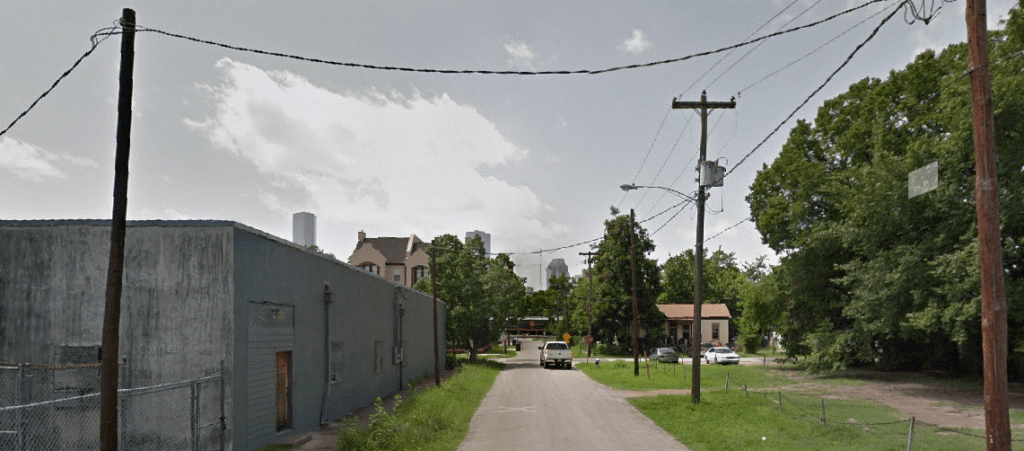
Making Room for Choice
The most important aspect of this discussion is not the economics of land-use or the political actions that need to be taken to implement these changes: it’s the people. Economists are often accused of spending too much time at the blackboard talking about money and politics and not enough time actually trying to help people. This is a great shame. Not because it’s true, but because economics is fundamentally a subject concerned with human well-being. The shame is that economists have become so tied up with their models and mathematics that they forget to tell people what it’s all about. Just look at the title of Adam Smith’s great book: An Inquiry into the Nature and Causes of the Wealth of Nations.
An inquiry into the wealth of nations! Smith was fundamentally concerned with where wealth comes from, how its created, how to create more of it and who gets it. One who reads the first chapter of that book immediately recognizes Smith’s jubilation at the increase in the standard of living of the poor! Unfortunately, this is not known by most people. I’ll never forget the following story told to me by Richard Ebeling:
I was delivering a lecture at a college one evening and had attracted a small and otherwise polite crowd of “protesters,” I guess you could call them. But they were well-mannered enough and sat through my talk waiting to ask some “hard-hitting” questions. When I was just about done with my remarks one of these protesters stood up in the middle of the room and said: “Oh! You’re for the poor, too!” I later learned that this young man was a self-described socialist, and was under the impression that I, a free-market economist, was just a sycophant for the capitalists.
This, I think, speaks volumes about how many people feel when it comes to economics. It is true that economists often come to the defense of the rich (so long as their gains are not ill-gotten), but it is also true that economists come to the defense of the poor and of the middle class. They do not pick favorites; they do not hold one class of people above another. Good economists see economics for what it is and what it ought to be: a human science.
Let us not forget that in this seemingly mundane discussion over zoning, of all things, that real lives are at stake. Many opponents of the proposals set forth thus far no doubt have well-thought-out critiques. I have an answer for all of them. In fact, the burden of proof is on they who uphold the status quo. Their task is to explain to me why a family may not choose to live on a smaller lot. Why a person may not choose to live above a business. Why everyone must live in the traditional single-family home. And I swear, upon all that is holy, if a receive even a single reply advocating the necessity of grass in a front yard I will unleash the economic hounds of hell.
A final word from Ludwig von Mises: “A man who chooses between drinking a glass of milk and a glass of a solution of potassium cyanide does not choose between two beverages; he chooses between life and death. A society that chooses between capitalism and socialism does not choose between two social systems; it chooses between social cooperation and the disintegration of society. Socialism is not an alternative to capitalism; it is an alternative to any system under which men can live as human beings.”
[1] Salim Furth, “California Should Indeed Build New Cities—but don’t let Nathan J. Robinson anywhere near them,” (2022). Retrieved from: marketurbanism.com: https://marketurbanism.com/2022/03/17/california-should-indeed-build-new-cities-but-dont-let-nathan-j-robinson-anywhere-near-them/
Michael Lucas is a policy analyst at the MacIver Institute